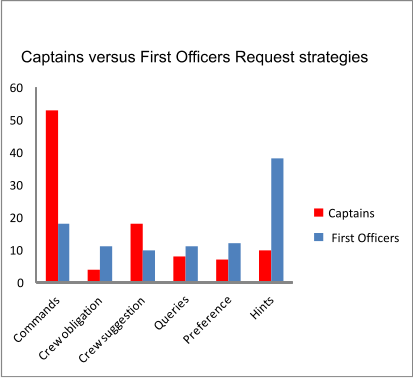Whatever the CCAG, once the judgement that a significant problem exists has been reached, the PM must communicate it to the PF. The PM's intervention will be adapted to the circumstances, becoming less and less forceful as the gradient increases. This "mitigation" process is well recognised by linguists and sociologists, and its effect in the cockpit was researched by Ute Fischer and Judith Orasanu.
Using a scale of six degrees of "force" from "hinting" to direct commands, they illustrated the difference between Captains and First Officers interventions to correct a situation. This study involved only US and European pilots, but recognised that there are other "cultural" factors involved, which are discussed later. As might be expected, the researchers commented that just in the way the request was expressed "there was a stronger obligation for first officers to comply with captains' requests than vice versa."

In the worst case, the CCAG will be so strong that not even the natural instinct for self-preservation, let alone any regulations or training, can overcome it, as was demonstrated in the crash of an Airbus A 321 in 2010.
With people, "monitoring" is supervising, and "supervising" requires authority.
The root of this problem lies in the very definition of "monitoring". Every definition of monitoring in human terms, particularly those involving action, implies "supervision", "surveillance", or "oversight" from a position of authority over the person being monitored. The inability of a PM to intervene effectively simply reflects that a junior person cannot "supervise" a senior one, a situation known throughout history in military, political and economic affairs, and no different in an aircraft cockpit.
The breakdown of CRM in many accidents simply reflects this basic fact of life. When the Boeing position "The task of the Pilot Monitoring is to prevent the Pilot Flying from killing the crew and passengers and from damaging the airplane" is re-stated for a "normal" flight (Captain as PF) with this in mind, it becomes "The task of the First Officer is to supervise the Captain and stop him killing the crew and passengers and from damaging the airplane". But in reality, how many pilots actually accept this?